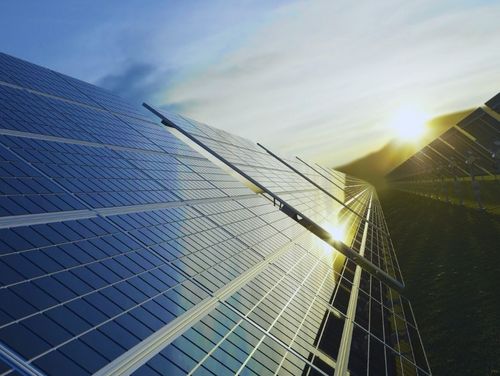Given the global need to stop the consumption of fossil fuels, alternatives obtained from inexhaustible sources are beginning to win the battle against classic technologies, advocating greater care for the environment and efficient use of available resources.
SOLAR ENERGY, WHAT IS IT AND HOW DOES IT WORK?
It is an inexhaustible source of clean energy, an accessible and, moreover, silent technology.
Placing solar energy in a historical moment is a complex task, since instruments for the use of solar light and heat were already being used in Ancient Greece as early as 400 BC. Years later, in Ancient Rome, the first greenhouses were devised, once the effect of a design adapted to the orientation and power of the sun had been investigated.
However, it was not until 1883 that Charles Fritts invented the first device to generate electricity by harnessing solar power. In the 90s, a new wave of progress arrived, reducing the thickness of the plates and increasing their efficiency, but at a high cost, which limited their use to aeronautics and the space sector. Later, improvements in materials and efficiency were achieved as part of a third milestone. Now, we are talking about a fourth generation that has lowered the price of much more efficient panels, which can even capture the infrared spectrum. In this new era, we find a new 'holy grail': perovskites, instead of silicon.
TYPES OF SOLAR ENERGY
Depending on the shape and the purpose of collecting electromagnetic radiation from the sun, four classification options can be found:
- Passive solar energy: it is about using and arranging materials to collect a greater amount of energy, mostly applied to air conditioning and lighting. It is one of the benefits of eco-design and bioclimatic architecture.
- Photovoltaic solar energy: uses large glass plates, also called solar panels, to directly transform radiation into electricity through photovoltaic cells. When they come into direct contact with light, ionization is produced by photon collision, releasing electrons. When they interact with each other, they generate current. There are two types of installations in this category: solar panels for self-consumption - a growing trend - and photovoltaic production plants
- Thermal solar energy: this also uses panels, but in this case their function is different: they collect solar radiation and accumulate it in their reservoir, which is why they are known as collectors or solar collectors. As a result, they produce enough energy to supply heating systems as well as hot water. There is a variant called "concentrated solar thermal energy", which concentrates the radiation on a single receiver to mobilize elements such as engines or turbines.
- Hybrid solar energy: is that which is installed together with another renewable energy source to further exploit energy collection. The most popular combination is composed of solar panels and wind turbines, resulting in a combination of solar and wind energy.
WHY IS IT SO IMPORTANT IN SPAIN?
With an installed solar park of 14.6%, solar energy production in Spain has grown by more than 37% during 2022. In the last three years, its average has tripled, making it the fourth largest source of energy in Spain. The large increase in the use of solar energy in Spain is no coincidence, but is due to a series of factors that have highlighted the need to seek new sources of electricity.
The current situation in terms of supply prices is encouraging more and more users - whether individuals or companies - to use alternatives such as this one, although it is true that the biggest disadvantage is the initial investment. That is why there is a proliferation of communities that use photovoltaic energy, democratizing the self-consumption of energy even in housing complexes. In fact, more and more new constructions are including solar energy as one of their energy sources from the outset.
The subsidies created with the aim of popularizing this energy, collected by the IDAE (Institute for the Democratization and Saving of Energy) are another advantage, which shows a new path to follow. In addition, this initiative also boosts the creation of employment and wealth, helping to solve labor problems.
Location is another factor to be taken into account. Spain, located in southern Europe, is an eminently sunny country with large areas that meet the requirements as a solar energy site. Despite this, the arrival of winter can produce intermittent stoppages in terms of solar radiation collection.
PHOTOVOLTAIC ENERGY IN PUK PORTACABLES
PUK Portacables accumulates projects scattered throughout the Spanish geography, mainly concentrated in the south of the Peninsula and the Canary Islands. The PUK Solar branch, dedicated to the study, design, production and distribution of photovoltaic energy, distributes and installs solar panels using its own conductive material: German know-how and quality, applied to the renewable energy sector.
Since 2009, PUK has positioned itself on the international market as an expert in substructures for photovoltaic systems, developing reliable and durable mounting solutions for ground-based solar parks, among other installations.
In recent years, PUK has installed more than 16,000 tons of steel worldwide and supplied and installed mounting systems for photovoltaic systems with a total capacity of more than 800 megawatts.
